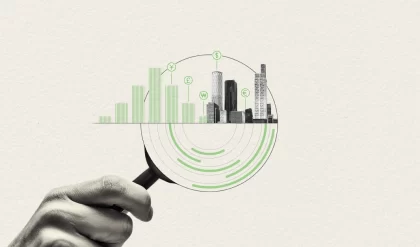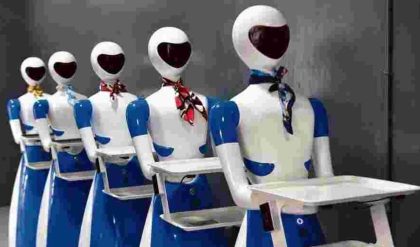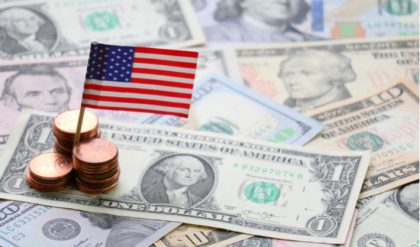Win, lose or draw on Tuesday, the Democratic Party will almost immediately turn its focus to the next presidential election and the fight between the establishment center and the left wing. But while the Democrats have that argument, they must also undertake the far more important task of thinking about what they agree on, and how they can construct a story about how the economy works and grows and spreads prosperity, a story that competes with — and defeats — the Republicans’ own narrative.
For 40 years, with a few exceptions, Democrats have utterly failed to do so. Until they fix this, they will lose economic arguments to the Republicans — even though majorities disagree with the Republicans on many questions — because every economic debate will proceed from Republican assumptions that make it all but impossible for Democrats to argue their case forcefully.
Republicans have a theory and a story about how the economy grows. You know it as supply-side economics: Cutting taxes, especially on the rich, and decreasing regulation will unleash so much innovation and economic activity that tax revenues will actually increase and the entire economy will benefit.
This has been the conservative story, which the right has elevated to veritable religion, for 30 or 40 years now. And the Democrats’ alternative story is … what? If you’re not recalling it, that’s because there isn’t one.
The Democrats have impulses, they have beliefs, they even have principles. But they don’t have a story to challenge the supply-side story and tell people about how the economy grows and helps everyone.
They used to, once upon a time. It was called Keynesianism, or sometimes demand-side economics (which is why conservatives named their theory supply-side). Keynesianism — in a nutshell, government investment in public goods increase demand and prosperity — held sway from the 1940s through the 1970s, the greatest period of economic growth in history.
Then came stagflation, which opened the door for the supply-siders. Democrats, by and large, stopped talking about theories. Their story was discredited, so the supply-siders said. Democrats stopped defending public investment, and they stopped defending government.
They still defend particular investments that poll well, like infrastructure spending. And they defend specific programs when they know they’re on safe ground, like Social Security and Medicare. And now that Obamacare, or at least the part about making insurers cover people with pre-existing conditions, is registering positive numbers, they’re happy to defend it, as they should.
But none of this amounts to an answer to supply-side economics. None of it creates an alternative story about how prosperity is spread.
It seems to me that the Democrats’ story has to be built around the simple idea of investing in middle- and working-class people. Not “spending,” but “investing.” Spending sounds profligate; investing sounds prudent.
This is not to be done for reasons of “fairness.” That’s an absolutely vital point. Liberals reflexively want to make economic arguments about fairness. But this persuades only liberals. People who aren’t liberals — three-quarters of the country — don’t especially care about fairness. They do, however, care about growth. So Democrats need to argue that these investments, not tax cuts for the rich, are the way to spur growth.
Such an argument stands in direct contrast to the right’s story. Republicans say the rich, with millions returned to them in the form of tax cuts, know best what to do with their money and the market can make the best decisions about investments and society’s needs.
It should be fairly easy for Democrats to say to Americans: Look around you. How has that worked out for you?
Inequality is rampant. People fear being bankrupted by medical catastrophe (though not as much as they once did, thanks to President Barack Obama). Young people in college spend 25 years paying off debt. Young people not in college are working three jobs, none of which pays benefits or gives them steady hours. Your town is probably a shell of its former self, and some of your friends and relatives — all of them good, decent people — are in the grip of heroin or fentanyl addiction. This is what 40 years of market decision-making has done.
(By the way, the supply-siders’ big promise about revenue was a fairy tale. The Bush tax cuts cost the Treasury at least $1.7 trillion. And the Trump tax cut has blown a new hole in the deficit, which Republicans want to patch, naturally, by cutting middle-class entitlements.)
So that’s the easy half of the story — criticizing supply-side’s failures. The harder half is making the affirmative case for the Democratic theory of growth.
It shouldn’t be so hard. Take, again, wages. Expanding overtime pay, raising wages, even doing something about the enormous and under-discussed problem of wage theft — we don’t wish to address these problems, Democrats should say, out of fairness or compassion or some desire to punish capitalists. We want to address them because putting more money in working- and middle-class people’s pockets is a better way to spur on the economy than giving rich people more tax cuts.
That’s an argument that might appeal broadly, but it’s backed up by a theory that in our time is practically seditious: that the public sector can make better decisions about where money should go than the private sector. That is a principle Democrats have been skittish about supporting. But it is one they must start defending without apology.
They should defend it because it’s what more and more economists argue and because it’s what Democrats believe. There’s a lot of ideological space between Senator Joe Manchin of West Virginia and Representative Raúl Grijalva of Arizona, who is among the most left-leaning members of the House. But they’re both Democrats for a reason, and presumably that reason is they think government can be a force for good in people’s lives. So, if Democrats think it, they should say it.
And now we have arrived at an alternate theory, a story: Giving more money to working people and investing in their needs is how an economy grows. That’s a direct counterargument to supply-side economics. If enough Democrats say it and say it and say it, they can drive a stake through supply-side’s heart.
Once Democrats can make that case, they’ll be able to turn the tables on the supply-siders. Republicans will argue that government investments and wage increases are “job killers.” But Democrats, rather than merely appealing to people’s consciences, will be able to respond that government investments and wage increases are growth producers that will spread benefits well beyond the top 5 percent or 10 percent.
The story could use a name. The venture capitalist Nick Hanauer and Eric Liu, a former Bill Clinton domestic policy adviser, coined “middle-out economics” five years ago. President Obama even used the phrase a few times.
The important thing is the idea. Democrats must persuade America that there’s a better way to expand the economy than the way Republicans have been advocating for decades. Just as inflation and other ills opened the door for critiques of Keynesianism in the 1970s, so have inequality and disinvestment done the same for critiques of supply-side today. Someone just has to make them.





